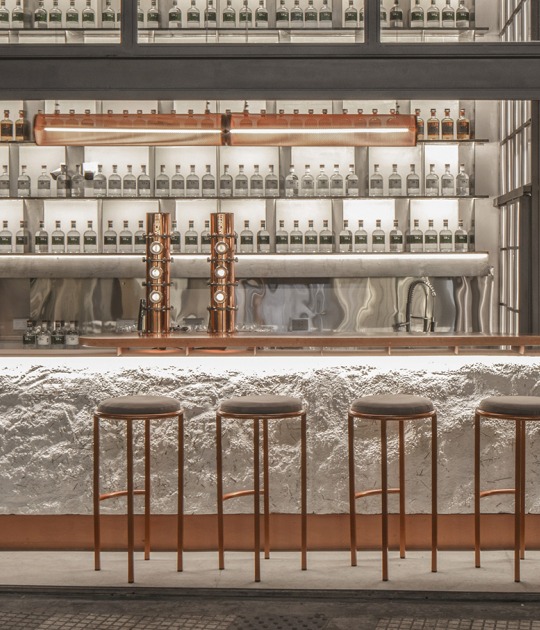For this, it was decided to use cross-laminated wood (CLT) and laminated veneer lumber (LVL), which are much more durable, lighter, and easier to transport than traditional construction materials and also generate much less waste. The building is powered by renewable energy sources thanks to solar panels and wooden exterior cladding.
The interior was designed to encourage interaction and collaboration, allowing people to connect through a variety of spaces and in multiple ways. The rooms of different sizes and the numerous seating areas and outdoor spaces culminate in a roof terrace with views of the city.

The Black & White Building by Waugh Thistleton Architects. Photograph by Ed Reeve.
Project description by Waugh Thistleton Architects
The iconic solid timber office building, The Black & White Building, was built by TOG (The Office Group), specialists in designer workspaces, and designed by Waugh Thistleton Architects, specialists in timber architecture, to generate a new approach design in the workplace.
The seven-story wooden building (17.8 meters high) is located in the heart of Shoreditch (London) on the site of a former lumber yard and has become an emblem of the "architecture of sufficiency", in which each element fulfills a function, nothing is superfluous and all materials and processes are as efficient and sustainable as possible.
The American Hardwood Export Council (AHEC) collaborated with the design team to create its original façade in heat-treated rosewood. Thermally modified wood, or TMT, is a winning solution for use in exterior applications, such as cladding, decking, outdoor furniture, or even, in the case of the Black & White Building, solar shading.
TOG and Waugh Thistleton set out to create a building that would minimize carbon emissions both during construction and in operation once completed. The architects opted for a structure built from cross-laminated timber (CLT) and laminated veneer lumber (LVL). These high-performance machined wood materials, in addition to being highly durable, generate significantly fewer greenhouse gas emissions in their production compared to steel or cement. This results in savings of thousands of tons of CO2.

The Black & White Building by Waugh Thistleton Architects. Photograph by Ed Reeve.
Cross-laminated timber is much lighter and easier to transport than conventional construction materials such as concrete and steel, therefore fewer deliveries are needed to bring the necessary quantities to the site. In addition to generating much less waste than other more common construction materials, such as iron, steel, and cement, cross-laminated wood and laminated veneer lumber also have the advantage of being completely replaceable.
For a sustainable forest to regenerate the amount of wood used in the construction of The Black & White Building, it would take approximately 137 minutes. This means that it is possible to grow enough wood to build a six-story, seven-story building in less time than it takes to bake a loaf of bread.
The Black & White Building is powered by 100% renewable energy sources, including 80 solar panels on the roof. In particular, the exterior cladding composed of wood slats that extend from street level to the roof is the result of collaboration between the American Hardwood Export Council (AHEC) and the design team. Together, they have explored and presented the potential of thermally modified American hardwoods as an outdoor material.

The Black & White Building by Waugh Thistleton Architects. Photograph by Ed Reeve.
Inside, The Black & White Building has been consciously designed to encourage interaction and collaboration, allowing people to connect across a variety of spaces in multiple ways. It has rooms of different sizes and layouts, as well as numerous rest areas and outdoor spaces, culminating in a deck roof with views of the city, ideal for sunny days. To maximize the entry of natural light into the building throughout the day, a light well runs the entire height of the building from the roof terrace to a patio with a maple tree located on the ground floor. The entire building is, as Waugh Thistleton has described it, “visibly sustainable.” The sensory impact of the space is impressive.
“I love that “high” feeling you get when you first walk in the beauty, the excitement, and the aroma. When you walk through the front door and discover the cathedral-like contemporary quality of the space, you feel that the building produces a sense of overwhelming optimism.”
Andrew Waugh, Waugh Thistleton Architects.
The ambitious Black & White Building project aims to demonstrate that wood is not only a viable alternative to conventional concrete and steel used to build offices but that, in terms of performance and sustainability, it is the preferable option.














































